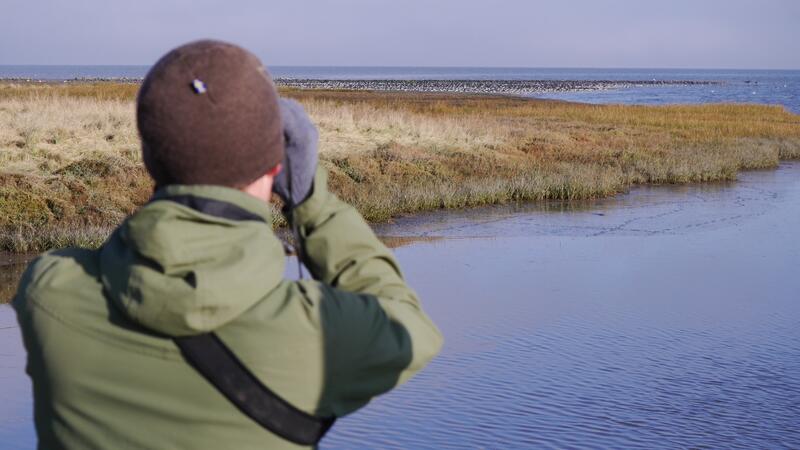Third East Atlantic Flyway Waterbird Census to take place in January 2020

Around 26 African countries and 16 European along the East Atlantic Flyway will undertake a count of waterbirds in January 2020. The census, a joint effort between national governments, national and international organizations, in addition to volunteers is jointly coordinated by the Wadden Sea Flyway Initiative, BirdLife International and Wetlands International.
The East Atlantic Flyway encompasses a string of key sites from the Arctic to Southern Africa where waterbirds find refuge during breeding, migration and non-breeding. Like previous counts done in 2014 and 2017, the 2020 count will be instrumental in getting important data on waterbirds including numbers, trends, and threats facing them. This knowledge is essential to be able to safeguard the birds’ populations.
“This bird count provides us a chance to get information on waterbirds along this important flyway which will turn in influence conservation policies in countries involved in the search,” stress Marc van Roomen, Project Manager at the Wadden Sea Flyway Initiative.
To collect these data a huge joint effort is needed as the species concerned are distributed over many countries on long distances. “The coordination of the East Atlantic Flyway count will involve one thousand people. Birds are connecting people around the world,” said Gabin Agblonon, Project Manager at Wetlands International.
The January 2020 count is important on three levels. At the site level, the count will determine local numbers in these locations. At the national level, governments and non-governmental organizations will be able to harness the information on the sum of site totals and change in site totals in their country to inform conservation measures. At the international level, this count will contribute the sum of country totals along the East Atlantic Flyway to calculate flyway trends and flyway population sizes to important frameworks and Agreements including the African-Eurasian Migratory Waterbird Agreement (AEWA) and the Convention on Biodiversity among others. Flyway trends and flyway population sizes are in turn important references to judge the site conservation status, making the circle round again.
In addition, waterbirds act as indicators of the quality of the sites they use and to a large extent the immediate environment. “This census will also give us insight into the state of conservation and into the changes of the environments in which these birds are found in,” noted Geoffroy Citegeste, Project Manager at BirdLife International.”
This major survey is a follow-up of similar efforts in January 2014 and 2017, and the goal is to periodically continue the counts in future.
About Wadden Sea Flyway Initiative
The Wadden Sea Flyway Initiative results from the inscription of the Wadden Sea, chaired by Denmark, Germany and The Netherlands, as a World Heritage Site and seeks to strengthen cooperation on management and research activities with States Parties along the East Atlantic Flyway, for conservation of migratory species along this flyway. More
About Wetlands International
Wetlands International is the only global not-for-profit organisation dedicated to the conservation and restoration of wetlands.
About BirdLife International
BirdLife International is the world’s largest conservation partnership focussing on conserving birds, their habitats and global biodiversity, working with people towards sustainability in the use of natural resources.

